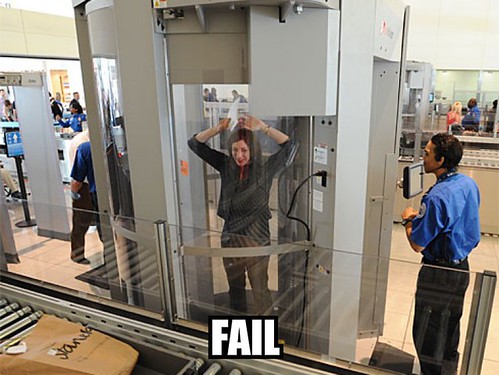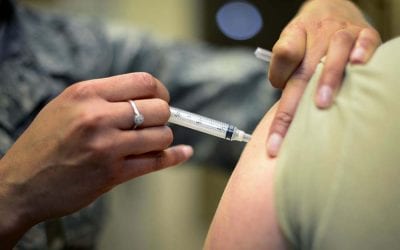During the holiday season, many who don’t fly at other times of the year are off to the airport to visit family and to vacation while their children are “off” from school for the Christmas/New Year’s break.
Especially if you’re traveling with youngsters, getting through TSA (Transportation Security Administration) security at the airport should begin with careful planning at home. Packing smart prevents holdups and problems at the airport. Preparing young children for the airport experience is important to their well-being and your ability to get the whole family through TSA quickly and without incident.
I have some tips for air travelers to help you get through TSA security at the airport quickly and without problems during the busy holiday season. This week I’ll discuss what you can do at home before leaving for the airport.
Getting through airport security starts with smart packing. You need to know what’s permitted to be packed in your carry-on, and what you’ll have to pack in your checked luggage to pass through security. For example, most sharp objects, many sporting goods, typical bottles of shampoo and other liquids, and some tools may not be packed in your carry-on but can be packed in your checked luggage, with special requirements for some items.
Check the TSA website, “Prohibited Items” page to learn what you can and can’t pack in both carry-on and checked luggage. This information is available via TSA’s smartphone app, “My TSA,” too.
To take liquids and gels, shampoo and toothpaste, for example, in your carry-on, make sure you understand the TSA 3-1-1 Rule, and follow it carefully. Put your “liquids baggie” in an easily accessible location in your carry-on so it’s easily removed to place it in a TSA screening bin.
Some liquids, such as medications, baby formula and food, and breast milk are allowed in larger “reasonable” quantities and don’t have to be in your baggie, but you must declare such items to a TSA officer at the security checkpoint. If you don’t declare the items, when they’re found, you’ll be delayed at security for extra scrutiny, and you might not be able to bring them with you.
Pack both your carry-ons and checked luggage in layers. Keep items with wires, including electronic gear, hair driers, electric shavers, etc., separate from each other, with the wires wrapped and secured. That permits TSA officers to more easily view your gear during their x-ray inspection, so you’ll hopefully avoid having your bags opened and hand screened.
At this time of year, many air travelers are bearing gifts. While bringing “wrapped” gifts on airplanes is permitted, I’d wait until you get to your destination before wrapping them. TSA may decide to hand inspect one or more of the gifts you’re carrying, and the wrapping will likely be ruined.
TSA allows small (tennis ball size) snow globes in carry-on luggage, but they must be packed in your “liquids baggie,” with your other carry-on liquids. Larger snow globes must be packed in your checked luggage.
While it may be the holiday season, you still can’t bring more than a carry-on and a personal item into your airplane’s cabin when you fly. Bringing along a shopping bag or two with presents, in addition to your carry-on and personal item, won’t be permitted.
Don’t forget, the airlines assume no liability for broken, missing or stolen breakables and valuables packed in your checked luggage, including breakable and valuable holiday gifts.
Personally, I ship my holiday gifts via a package delivery service, even when I’m flying to visit their recipients. I want them to get to family and friends intact and on time. Plus, I want to get through TSA security and on to my flights with a minimum of hassle.
If you’re traveling with young children, prepare them for what will happen at TSA security, which you can read about at the TSA website’s “Traveling with Children” page. This is especially true of explaining about patdowns which, despite what you may have heard to the contrary, are still being performed on children when TSA deems it necessary.
In fact, many children are patted down. Parents carrying infants or children can’t be screened by advanced imaging technology units (AIT), i.e. full body scanners. In addition, as parents accompanying children, you may want to opt out of being screened by AIT to prevent you from being separated from your children.
Personally, for health and safety reasons, I always opt out of AIT screening and would do the same for my children. I’ve found that when passengers cooperate with TSA officers doing patdowns, while we’d all rather skip them, they are generally done professionally.
At the airport you’ll be required to empty your pockets of everything at TSA security, prior to screening. While theft at TSA checkpoints is rare, it does happen. Plan to put your cash, wallet, cell phone, mp3 player, headphones, and other valuables, in something to keep them unseen. I wear a photographer’s vest when I travel, and put my valuables in its zippered pockets before leaving home.
Next week, I’ll discuss TSA holiday tips to follow once you’re at the airport.
After many years working in corporate America as a chemical engineer, executive and eventually CFO of a multinational manufacturer, Ned founded a tech consulting company and later restarted NSL Photography, his photography business. Before entering the corporate world, Ned worked as a Public Health Engineer for the Philadelphia Department of Public Health. As a well known corporate, travel and wildlife photographer, Ned travels the world writing about travel and photography, as well as running photography workshops, seminars and photowalks. Visit Ned’s Photography Blog and Galleries.


